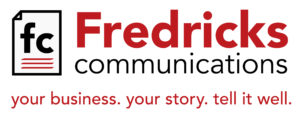Tip Tuesday – It’s Not Literally Dangerous in Copywriting, But…
![]()
First, to be absolutely clear, no limbs will go flying when you use the word “literally” in your copywriting. Never in the history of the world has a written word literally caused an explosion. Except when terrorists or members of militaries write notes to each other.
Nevertheless, beware of using the word in your advertising and marketing content. Literally means something is fact, so using it to intensify a word or statement that follows is almost always incorrect.
“Our service will literally blow you away,” indicates your customers will, in fact, be lifted from their feet and tumble down the highway like so many tumbleweeds in a bad old Western when they experience your service. Or they will, in fact, be thrown back dozens of feet by a bomb blast.
Let’s be clear again. No one is going to take you seriously and expect to be lifted off of their feet, by wind, explosion or anything else.
But here’s the thing. What you’re trying to say, in a figurative way, is that your company’s service is incredible and your customers will be highly impressed and pleased.
Unfortunately, “Our service will figuratively blow you away,” doesn’t carry quite the same punch.
You just need to find a way to work that into your copy without resorting to literally or being insufferably dull.
Saying suspects, prospects or customers literally will be blown away isn’t dangerous – it won’t cause cancer and no one is going to get electrocuted – it’s just absurd. Your company won’t just look less than professional, it’ll look silly, like a company that really shouldn’t be taken too seriously.
If you see literally in your copywriting, a rewrite is in order. Seriously.
![]()
![]()






